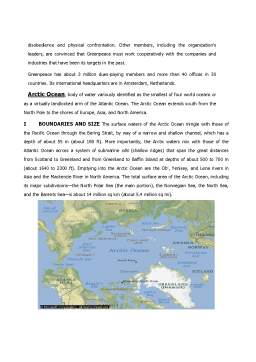Extras din referat
Earth
one of the planets in the solar system, the third in distance from the sun and the fifth largest of the planets in diameter. The mean distance of the earth from the sun is 149,503,000 km (92,897,000 mi). It is the only planet known to support life, although some of the other planets have atmospheres and contain water.
The earth is not a perfect sphere but is slightly oblate, or flattened at the poles. The diameter of the earth measured around the North Pole and the South Pole is about 42 km (26 mi) less than the diameter of the earth measured at the equator.
COMPOSITION
The earth consists of five parts: the first, the atmosphere, is gaseous; the second, the hydrosphere, is liquid; the third, fourth, and fifth, the lithosphere, mantle, and core, are largely solid. The atmosphere is the gaseous envelope that surrounds the solid body of the planet. Although it has a thickness of more than 1100 km (more than 700 mi), about half its mass is concentrated in the lower 5.6 km (3.5 mi). The lithosphere, consisting mainly of the cold, rigid, rocky crust of the earth, extends to depths of 100 km (60 mi). The hydrosphere is the layer of water that, in the form of the oceans, covers approximately 70.8 percent of the surface of the earth. The mantle and core are the heavy interior of the earth, making up most of the earth’s mass.
The hydrosphere consists chiefly of the oceans, but technically includes all water surfaces in the world, including inland seas, lakes, rivers, and underground waters. The average depth of the oceans is 3794 m (12,447 ft), more than five times the average height of the continents. The mass of the oceans is approximately 1.35 quintillion (1.35 × 1018) metric tons, or about 1/4400 of the total mass of the earth.
The rocks of the lithosphere have an average density of 2.7 and are almost entirely made up of 11 elements, which together account for about 99.5 percent of its mass. The most abundant is oxygen (about 46.60 percent of the total), followed by silicon (about 27.72 percent), aluminum (8.13 percent), iron (5.0 percent), calcium (3.63 percent), sodium (2.83 percent), potassium (2.59 percent), magnesium (2.09 percent) and titanium, hydrogen, and phosphorus (totaling less than 1 percent). In addition, 11 other elements are present in trace amounts of 0.1 to 0.02 percent. These elements, in order of abundance, are carbon, manganese, sulfur, barium, chlorine, chromium, fluorine, zirconium, nickel, strontium, and vanadium. The elements are present in the lithosphere almost entirely in the form of compounds rather than in their free state. These compounds exist almost entirely in the crystalline state, so they are, by definition, minerals.
The lithosphere comprises two shells—the crust and upper mantle—that are divided into a dozen or so rigid tectonic plates (see Plate Tectonics). The crust itself is divided in two. The sialic or upper crust, of which the continents consist, is made up of igneous and sedimentary rocks whose average chemical composition is similar to that of granite and whose density is about 2.7. The simatic or lower crust, which forms the floors of the ocean basins, is made of darker, heavier igneous rocks such as gabbro and basalt, with an average density of about 3.
The lithosphere also includes the upper mantle. Rocks at these depths have a density of about 3.3. The upper mantle is separated from the crust above by a seismic discontinuity, called the Moho, and from the lower mantle below by a zone of weakness known as the asthenosphere. Shearing of the plastic, partially molten rocks of the asthenosphere, 100 km (60 mi) thick, enables the continents to drift across the earth’s surface and oceans to open and close.
The dense, heavy interior of the earth is divided into a thick shell, the mantle, surrounding an innermost sphere, the core. The mantle extends from the base of the crust to a depth of about 2900 km (1800 mi). Except for the zone known as the asthenosphere, it is solid, and its density, increasing with depth, ranges from 3.3 to 6. The upper mantle is composed of iron and magnesium silicates, as typified by the mineral olivine. The lower part may consist of a mixture of oxides of magnesium, silicon, and iron.
Preview document
Conținut arhivă zip
- Environmental Impact Statement.doc




























































































